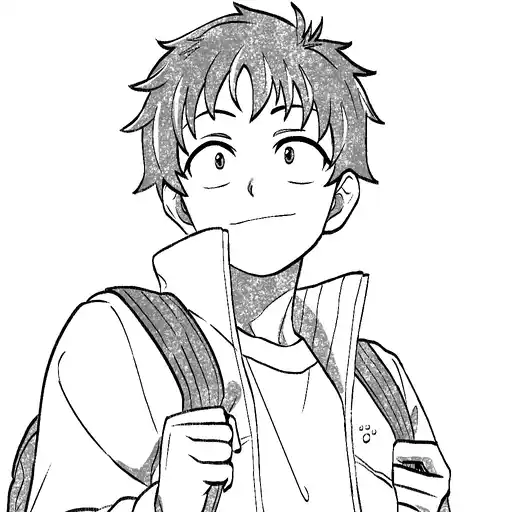Introduction
Anime has long been a medium of storytelling that transcends cultural boundaries, offering narratives that captivate audiences globally. One intriguing addition to this rich tapestry is the anime adaptation of From Bureaucrat to Villainess Dad: Been Reincarnated. This series offers a unique twist on the popular reincarnation trope, blending comedy, fantasy, and a touch of socio-political critique. The anime centers around Kenzaburō Tondabayashi, a 52-year-old public servant who finds himself reincarnated as Grace Auvergne, a duke’s daughter in a fantastical world. This narrative not only entertains but also prompts reflection on identity and societal roles.
As the series prepares to release its English dub, it’s essential to explore the intricacies involved in bringing this anime to non-Japanese speaking audiences. The team behind the English adaptation, including director Shannon D. Reed and audio engineer David Lascoe, plays a pivotal role in this cultural exchange. This article delves into the significance of the anime’s adaptation process, the cultural nuances inherent in its story, and the broader implications of its themes on global audiences.
Background and Context
Anime adaptations often involve a complex interplay of cultural nuances and storytelling techniques. The original manga, launched by Michiro Ueyama in 2020, quickly garnered a fanbase with its unique premise and engaging characters. Published in Shonengahosha’s Monthly Youngking Ours GH, the manga explores themes of identity, power dynamics, and personal transformation—all wrapped in an entertaining fantasy narrative.
The anime premiered on January 9 on MBS and TBS, reaching audiences across Japan through the Super Animeism TURBO programming block. Directed by Tetsuya Takeuchi, known for his work on I Couldn’t Become a Hero, So I Reluctantly Decided to Get a Job, the anime faithfully captures the whimsical yet thought-provoking essence of the manga. The series has been streaming on HIDIVE, allowing international audiences to experience its charm as it airs.
In adapting this series for an English-speaking audience, the production team must navigate linguistic and cultural differences. This involves not only translating dialogue but also preserving the humor, tone, and underlying themes that resonate with viewers. The process highlights the importance of cultural sensitivity and creativity in making anime accessible to a global audience.
Main Insights into the Anime Adaptation
Understanding the Art of Dubbing
The English dub of From Bureaucrat to Villainess Dad: Been Reincarnated is a testament to the collaborative effort of a skilled team. Shannon D. Reed, directing the dub, ensures that the original intent and emotional depth of the characters are maintained. This involves working closely with audio engineer David Lascoe and translator Ian Fagen to deliver a seamless and authentic viewing experience.
Role of ADR Scriptwriters
Marta Bechtol and Shannon D. Reed also contribute significantly as ADR scriptwriters. ADR (Automated Dialogue Replacement) involves re-recording dialogue to match the lip movements of animated characters. This requires not only linguistic expertise but also an understanding of cultural references, idiomatic expressions, and humor to ensure the adapted script resonates with English-speaking audiences.
Cultural Sensitivity in Translation
Ian Fagen’s role as the translator is crucial in bridging cultural gaps. He must ensure that jokes, cultural references, and character nuances are translated in a way that retains their original impact. This often involves creative adaptation rather than direct translation, highlighting the translator’s role as both a linguist and a cultural mediator.
The Technical Precision of Audio Engineering
Brent Marshall’s work as the mix engineer brings technical precision to the dub, ensuring that sound quality and voice clarity meet high standards. This technical aspect complements the creative elements, providing a polished final product that enhances the viewer’s immersion.
Character and World Design
Behind the scenes, Haruka Matsunae and Yuki Miyamoto craft the visual elements that bring the fantasy world to life. Their character and monster designs are integral to the storytelling, offering visual cues that enrich the narrative.
Musical Composition and Emotional Resonance
Music composers Natsumi Tabuchi, Misaki Tsuchida, Tsugumi Tanaka, Reiko Abe, and Kaho Sawada provide the series’ emotional backdrop. Their compositions underscore key moments and enhance the storytelling, making the narrative more poignant and memorable.
Challenges and Opportunities in Anime Adaptation
Navigating Cultural Differences
One of the primary challenges in anime adaptation is navigating cultural differences. Translators and scriptwriters must decide which cultural references to retain, adapt, or replace, ensuring that the story remains relatable while honoring its origins.
Opportunities for Cultural Exchange
Despite these challenges, anime adaptation offers opportunities for cultural exchange. By introducing global audiences to Japanese storytelling, these adaptations foster a greater understanding and appreciation of cultural diversity.
Technological Innovations in Dubbing
Technological advancements in audio engineering and animation offer new possibilities for anime adaptation. These innovations enhance the quality and accessibility of dubbed content, broadening its appeal and reach.
Future Outlook
The future of anime adaptation looks promising, with increasing interest from international audiences. As technology continues to evolve, so too will the methods of adaptation, offering more immersive and culturally nuanced experiences. The success of series like From Bureaucrat to Villainess Dad: Been Reincarnated highlights the growing demand for diverse narratives that challenge conventional storytelling.
Conclusion
From Bureaucrat to Villainess Dad: Been Reincarnated exemplifies the transformative power of anime, both as a medium for storytelling and a vehicle for cultural exchange. As the series reaches English-speaking audiences, it invites viewers to explore themes of identity, transformation, and societal roles through a distinctly Japanese lens. The collaborative efforts of the adaptation team ensure that the anime’s essence is preserved, offering a rich and engaging experience for audiences worldwide.
In a rapidly globalizing world, anime continues to be a bridge between cultures, fostering understanding and appreciation through its unique narratives. As we look to the future, the potential for anime to influence and inspire remains boundless, promising new stories and perspectives for generations to come.





